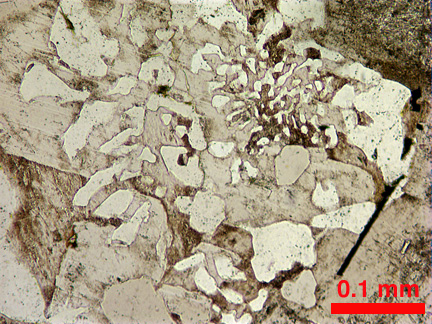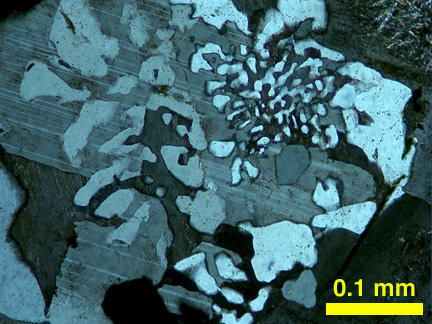| Crystal System |
Triclinic |
| Chemical Comp.. |
KAlSi3O8 |
| Color |
Colorless |
| Pleochroism |
None |
| Cleavage |
Poor |
| Relief |
Low |
| Birefringence |
Gray/White |
| 2V | 33˚-103˚ |
| Optic Sign | Positive/Negative |
| Twinning |
Carlsbad |
K-feldspar often exhibits Carlsbad (simple) twins in igneous rocks. This is not the case in metamorphic rocks.
In metamorphic rocks, it can be distinguished from quartz because of its biaxial character and the fact it will experience alteration (see below) relative to quartz. Also, because of the cleavage, K-feldspar may show "plucking" during thin section preparation (see the photo in cross polarized light immediately below). It is distinguished from plagioclase because it lacks polysynthetic twinning. Kf = K-feldspar; Qz = Quartz; Bi = Biotite; Mu = Muscovite.


The K-feldspar in this photomicrograph shows weak Carlsbad twinning.

The K-feldspar in these photomicrographs shows strong Carlsbad twinning.
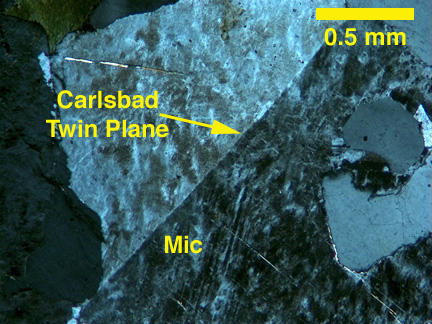
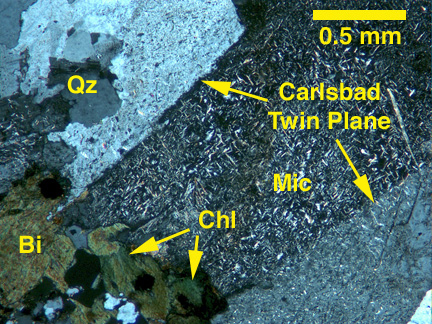
Sometimes K-Feldspar exhibits a perthitic texture, where Na-rich plagioclase exsolution blebs are present.
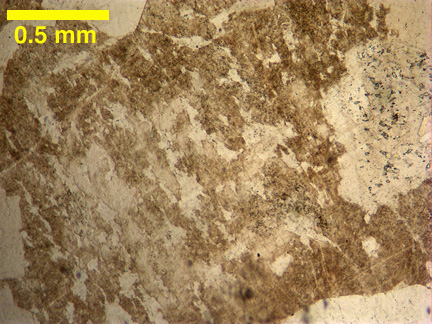

Some K-Feldspars can form wormy intergrowths with Quartz. These are called Myrmekitic or Granophyric intergrowths.
